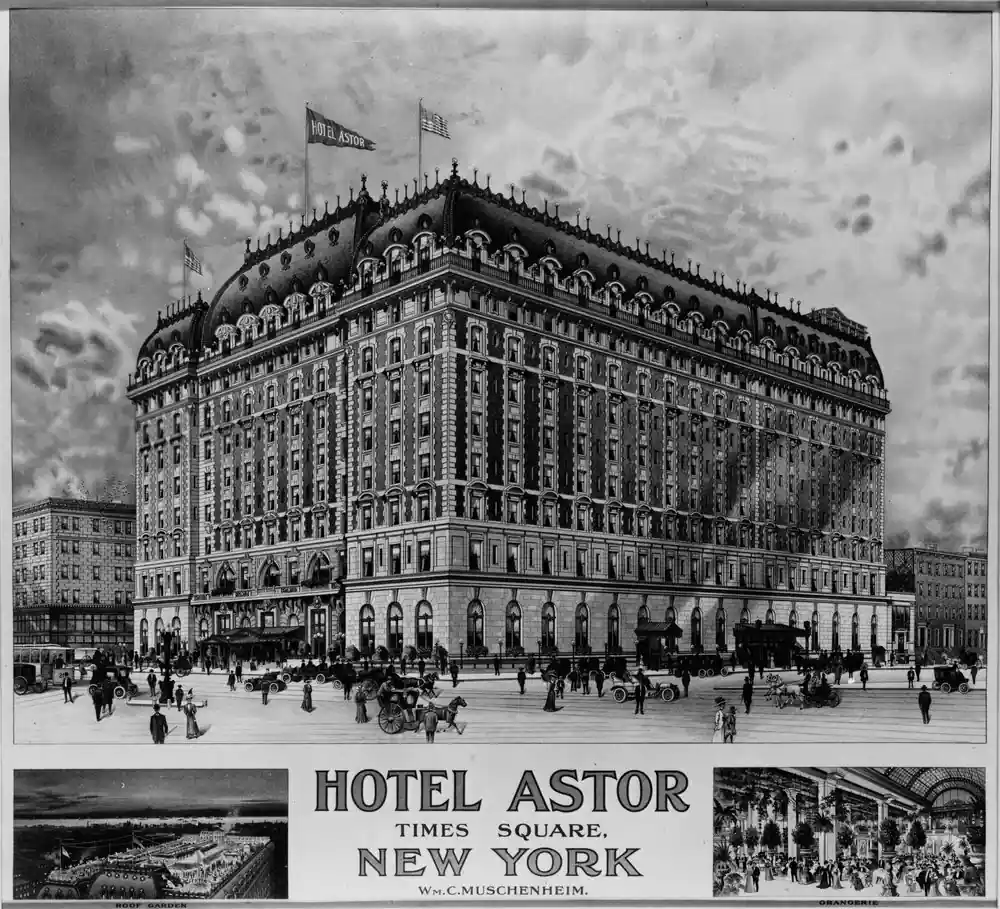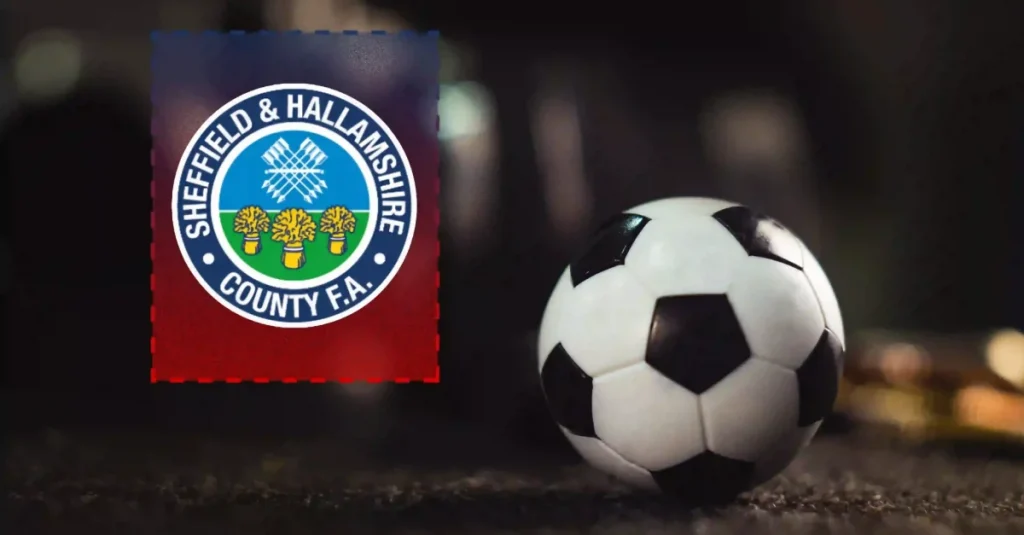Welcome to our blog post on the fascinating history of New York soccer teams between 1880 and 1930. This was a time of significant change and growth for the sport in the city as it transitioned from a largely amateur pastime to a fully professional league.
From the early days of the American Football Association to the formation of the first professional league, the American Soccer League, we will delve into the stories of the teams and players that helped shape the game in New York during this exciting period.
So get ready to discover the rich history of the teams, the rivalries, and the players who made it all happen in the Big Apple.
Soccer In 19th Century America
New York and Northern New Jersey have a rich history of soccer dating back to the late 19th century.
With the influx of European immigrants to the region, soccer became a popular sport among the working class. As a result, the area quickly became a soccer stronghold, with the New York/Northern New Jersey region at the center of soccer activity during the original American Soccer League in the 1920s and its successor in the 1930s through to the 1950s.
The New York Cosmos were a significant team during the soccer boom of the 1970s and 1980s, even attracting players like Pele. New York remains a substantial venue for international matches and amateur and professional soccer at all levels.
The first known soccer game in America was played in 1869 between Rutgers and Princeton, though it had many differences from the modern game. Despite the popularity of soccer among colleges in the early years, it eventually lost out to rugby, which evolved into modern gridiron football.
However, the sport continued to thrive in immigrant communities in the Northeastern US, eventually forming the American Football Association in 1884, which standardized rules and introduced changes such as penalty kicks.
American Football Association
Creating the American Football Challenge Cup was another key progression of US soccer history. Thirteen teams competed in the first Cup in 1885. Following the 1885 American Football Challenge Cup victory, O.N.T. made a tour of Canada, winning 9-1-1 against Toronto, Dundas, Galt, and Berlin Rangers.
An all-star Canadian team toured New York/New Jersey later in the year. In their final match of the tour, the United States faced a select side of top American players, marking their first international match against the Canadians.
A 1-0 victory for Canada was recorded at Clark Field in Kearny, NJ, on November 22, 1885. After the initial success from New York teams the first few years, the New England teams from Fall River and Pawtucket began to dominate the American Football Challenge Cup, winning from 1888-94.
Founded in 1894, the American League of Professional Football was the first professional soccer league in the USA, with the New York Giants representing the region. The league lasted 3 weeks.
The following year, the National Association of Football Clubs was formed.
With the suspension of the American Cup and NAFBL in 1899, soccer suffered a setback. Only a handful of teams remained in New York City, playing ad-hoc friendlies.
Soccer Teams Arriving From Europe
As a result of the 1905 national tour of the Pilgrims all-star team from England, which had provided fans with a first look at top-level soccer being played across the Atlantic, soccer revived significantly in 1906.
In short, the American Cup was revived, along with the NAFBL, and order was brought to the east of the Hudson with the establishment of the New York State Football Association, which eventually launched the New York Amateur league and a state Cup competition.
West Hudson A.A. began a mini-dynasty, winning the American Cup in 1906, 1908, and 1912, along with NAFBL titles in 1906-07, 1909-10, 1911-12, and 1912-13.
They also participated in one short-lived Eastern Soccer League season, finishing third. The New York State Amateur League often saw Clan MacDonald, Clan McDuff, Brooklyn Celtic, and Hollywood Inn battling for the league title.
Meanwhile, these circuits were joined in 1912 by the Field Club Soccer League and Metropolitan & District Amateur Foot Ball League in New York, and the St. George Soccer Football League in New Jersey, but the NYSAL and NAFBL often predominated at the higher levels.
Brooklyn Celtic of the NYSAL frequently had successful runs in the New York State Cup.
Clark Thread Co’s team was now known as Clark A.A. and made its presence known after the soccer revival, defeating the Kearny Scots for the 1907 American Cup and losing to Paterson True Blues in 1909.
Paterson would go on to take the Cup in 1913, while the Kearny Scots began their resurgence, returning to the finals of the American Cup in 1907, 1914, and 1915, taking the title in 1914.
Paterson A.C., Jersey A.C., and Bayonne Babcock & Wilcox were frequent contenders for the NAFBL title throughout the teens, with Paterson and Bayonne making the finals only to fall to Bethlehem Steel.
American Amateur Football Association
Soccer eventually returned to the college ranks, with Columbia representing the region in the Intercollegiate Amateur Football League, the first college conference.
The NY State Association was behind the first attempt to create a truly national soccer organization, founding the American Amateur Football Association in 1911, one that, unlike the AFA, was not directly linked to the International Board headed by the English Football Association.
The AAFA set to work standardizing rules and soon had several affiliates, including some from far beyond the territory of the AFA. They also established the AAFA Cup, the predecessor of the U. S. Open Cup.
Success For New York Soccer Teams
New York soccer teams did well in the AAFA Cup, with Brooklyn Celtic defeating Newark FC 3-0 in 1912 final and Yonkers FC defeating Yonkers Hollywood Inn 3-0 in 1913.
The AAFA and AFA made competing sanctioning applications to FIFA, which put their decision on hold while advising the organizations to work out their differences.
Reconciliation efforts were fruitless, but after several key organizations switched their allegiance to the AAFA in 1913, representatives of the AAFA’s seven state associations gathered and formally established the United States Football Association, which received recognition from FIFA.
They soon gained the allegiance of the remaining state associations and the AFA. They also formalized alliances with the Amateur Athletic Union and Olympic Committee and took the Dewar AAFA trophy as the reward for their new tournament, the National Challenge Cup.
The establishment of the National Challenge Cup (Later the US Open Cup) in 1914 was a significant development. The NY/NJ region dominated the first edition, with Brooklyn Field Club defeating Brooklyn Celtic in the final.
Brooklyn Celtic and Paterson F. C. made the finals in 1915 and 1919 respectively.
Two more Brooklyn teams made the finals shortly after that, with Robins Dry Dock taking the title in 1921 and Todd Shipyards falling short by a goal to Scullin’s Steel of St. Louis in 1922. For the most part, however, the competition was dominated by the dynastic Bethlehem Steel and clubs from New England.
While New York soccer teams continued to do well in the American Cup, Paterson, Kearny Babson & Wilcox, and West Hudson all fell to the Bethlehem Steel juggernaut between 1916-19.
Organized soccer was hard hit by the United States’ entry into World War I in 1917, and the NAFBL, despite the addition of powerhouse Bethlehem Steel, never recovered. However, Robins Dry Dock achieved some distinction by winning the American Cup in 1919 and 1920.
The Celtics and New York Field Club both played the All-Scots of Scotland during their tour in the summer of 1921, suffering close losses.
Frustrated by the deterioration of the league and spurred by a desire to establish soccer on a more professional level, several critical teams from the NAFBL and Southern New England Soccer League formed the American Soccer League, leading to the other leagues’ demises.
Unlike the ill-fated ALPF and Eastern League of years past, the ASL had strong ownership and teams ranging from the Boston region through New York, New Jersey, and Pennsylvania.
Finally, the United States had an entirely professional soccer league that would take the sport to new heights over the next decade.
The Original American Soccer League
Since the American Soccer League was established in 1921, there has been a significant resurgence of soccer in the New York City/New Jersey region.
The ASL was formed on July 7, 1921, at the Astor Hotel with eight clubs, including the New York Football Club, Harrison Soccer Club, Bethlehem Steel, Todd Shipyards of Brooklyn, Jersey City Celtics, and three teams from New England.
In addition to the renown of these teams, the league also enjoyed strong financial backing, attracting more fantastic crowds than any previous league.
As the years progressed and the league grew in popularity, it was able to offer comfortable salaries for its top players. Soon, the ASL was importing top players from Europe, mainly from Scotland, and to a lesser extent, from England and Ireland.
There were complaints and accusations of poaching from European leagues as a result. For major matches in New England and New York, attendance averaged around 8,000 to 10,000. The league prospered nonetheless, although, for some time, the New England-based teams and Bethlehem Steel realized the greatest success.
New York Field Club finished second in the inaugural 1921-22 season and third in 1923-24. The Paterson Silk Sox joined the league in 1923 but only lasted one season, exiting along with Harrison. Indiana Flooring (based in New York City) joined in 1924, finishing in the middle of the pack, and the Newark Skeeters joined in 1925 but were perennial cellar-dwellers.
The year 1925 also saw a significant international match at Ebbets field when the US national team trounced Canada 6-1, with Bethlehem Steel great Archie Stark scoring four goals.
A significant event in September 1922 was the English Dick Kerr Ladies tour through the United States, probably the first appearance of women’s soccer in the country.
They played men’s teams, some of whom took it easy on them. Still, their level of skill and perseverance was impressive, and they kept the score close in most cases, losing to Paterson FC and Centro-Hispano before pulling off a surprising 8-4 victory over New York Field Club.
Archie Stark
One of the most successful players of the ASL (and the league’s all-time top goalscorer) was Archie Stark, who had played for seven seasons in the NAFBL with the Kearney Scots, Babcock & Wilcox, Erie AA, and Paterson F. C. before joining the New York Field Club.
In their third season, he led the league with 21 goals, but the team withdrew from the league; he signed with Bethlehem Steel and went on to break the all-time Division 1 single-season club scoring record with 67 goals (a world record that holds to this day – Brazil’s league system was not recognized at the Division 1 level until near the end of Pele’s career).
Other players of note included Davey Brown who was the league’s 3rd all-time goalscorer with 193 in his ten years, many with the New York Giants, and Johnny Nelson, the league’s 2nd all-time goalscorer who spent many of his early years with the Brooklyn Wanderers and later with the New York Nationals and the Giants, finishing with 201 goals.
Notable New York Soccer Teams
In late 1924, the Brooklyn Wanderers drew 1-1 with the visiting Corinthians all-star squad on tour from England, and they managed a draw with the touring Sparta FC of Prague, Czechoslovakia, in 1926.
In an effort to expand the soccer horizons, several ASL teams joined with four Canadian teams to form the International League which played a brief season after their respective league seasons.
Brooklyn Wanderers were the only New York soocer team to participate, but they won the ISL season title before losing to Toronto Ulster in the Nathan Strauss Cup. The league itself was unsuccessful, and though they fielded an all-star side against Sparta Prague in a post-season friendly, they lost 4-0 and quickly folded.
The New York National Giants were founded in 1923 by Maurice Vanderweghe, a local furrier. They were mediocre for their first few years but would play a significant role in the league as the end of the 1920s drew close.
Indiana Flooring started modestly in 1924 but came to life after being purchased in 1927 by Horace Stoneham, owner of the Baseball Giants. Unable to use that name, he called his team the Nationals. They struggled their first year, being topped in the standings by the Giants and Brooklyn.
However, both his team and the Giants would improve and soon come to play a significant role in the upheavals that convulsed the league as the season drew to a close.
Hakoah All-Stars
Meanwhile, a major event occurred in 1926 with the arrival of the Hakoah All-Stars, an all-Jewish team from Vienna, Austria.
Hakoah was a huge sensation, particularly in their New York soccer matches, where they beat the Brooklyn Wanderers, the Lavenders, and some all-star sides before traveling across the country on their way to a 7-2-2 record.
Their penultimate match was held in the Polo Grounds on May 29, where they pulled out a 2-1 victory over the New York Giants before 46,000 fans, an American soccer attendance record that would remain unbroken until the Pele era of the NASL some fifty years later.
Such was the impression made that Erno Schwarz, Max Gruenwald, and two other players remained to play for the Giants.
Hakoah returned in 1927 and repeated their success, and the touring schedule was fleshed out with a tour by Maccabi FC of Tel-Aviv, Israel, which compiled a 5-4-1 record playing primarily New York soccer teams.
One of the most prominent teams to hit the shores of the US in 1927 was Real Madrid, which drew 1-1 with Brooklyn’s Galicia. Nacional of Uruguay also had a very successful tour with a 9-3-1 record, opening and closing their tour in New York.
This was followed by Glasgow Rangers in 1928 and Preston North End a year later. From this point on, foreign teams conducted successful tours through the US over the next four decades, and playing New York soccer teams was always an essential stop on their itinerary.
Tensions Grow
As the 1920s advanced, tensions grew between the ASL and the United States Soccer Federation over jurisdictional issues.
The ASL had long chafed at their obligations to allow clubs to participate in the U.S. Open Cup because of the disruptions it created for their league season and the burden faced by teams trying to manage two parallel and arduous playing schedules.
They had pulled their teams from the Cup in 1924-25, leading to their suspension by the USSF. The ASL relented and was reinstated, but their increasing “poaching” of European players through the offering of lucrative contracts nearly led to the suspension of the USSF by FIFA.
That was forestalled by the USSF’s acceptance of some sanctions and agreeing to limitations on player signings. The ASL was outraged by the USSF’s actions and a struggle ensued over who would control soccer activities in the US.
Eventually, this dispute led to the ASL withdrawing from the 1928-29 Open Cup competition, again supposedly due to schedule crowding. Still, this time, Bethlehem Steel, the New York Giants, and the Newark Skeeters defied the league and entered the competition anyway, leading to their suspension by the ASL.
The teams appealed to the USSF who sent the ASL a stern warning which was ignored, leading to the league’s suspension. The ASL defied the USSF and played as an outlaw league minus the three expelled teams.
The USSF, in turn, played a significant role in forming the Eastern Soccer League, consisting of the three expelled ASL teams and several teams from the Southern New York Soccer Association.
More Rifts
Some former Vienna Hakoah players formed New York Hakoah and joined as well. This action leads to a rift between the SNYSA and USSF, with the SNYSA aligning itself with the ASL.
Both the ASL and SNYSA applied for FIFA sanctioning but were turned down. As a result, two rival leagues played in the contentious 1928-29 season, but both sides suffered extensive financial losses and middling results on the field.
They had had enough at the season’s end; peace was declared with the ESL folding and ASL returning to the USSF fold, temporarily renamed the Atlantic Coast League, and things basically returned to where they were before.
Ironically, through this turmoil, New York soccer teams won the Open Cup in 1928 and 1929, with the Nationals taking the 1928 edition (followed by the final edition of the American Cup in 1929) shortly before the war erupted, as well as the 1929 Lewis Cup, and the ESL’s New York Hakoah taking the honors in 1929.
Best New York Soccer Teams
In 1930, Hakoah was the best of the New York-based teams in the Atlantic Coast League. The region saw a new team, the Newark Americans, formed from many defunct Bethlehem Steel squad players.
Meanwhile, the New York Giants changed their name to the New York Soccer Club, which allowed Horace Stoneham to appropriate the Giants’ name for his Nationals. In 1931, the Fall River Marksmen, suffering from low attendance, moved to New York and merged with the New York Soccer Club, becoming the Yankees.
The region did well in the 1931 spring season, with the Giants winning the league title, followed closely by the Brooklyn Wanderers and the New York Yankees.
In an unusual twist, the Yankees, who had begun the U. S. Open Cup tournament as the Fall River Marksmen, retained that name through to the championship match, even though by the finals, they were known in the ASL as the Yankees, and wearing Yankee uniforms!
The Giants came close to winning the Fall 1931 season and made the semi-finals of the Open Cup, but both they and the Newark Americans had left the league by the fall of 1932.
New York Americans and Brookhattan joined the league at that point. Still, due to mounting financial difficulties, the ASL collapsed during their spring 1933 season, bringing to an end the first golden era of American Soccer.
However, the remaining roster of teams formed the basis of the second American Soccer League, which, although operating at a more modest and regionalized scale, was the top tier of USA soccer for several decades to come.
Conclusion
In conclusion, the history of New York soccer teams between 1880 and 1930 is a story of growth and evolution as the sport transitioned from a largely amateur pastime to a fully professional league.
From the early days of the American Football Association to the formation of the first professional league, the American Soccer League, we have delved into the stories of the teams and players that helped shape the game in New York during this exciting period.
We have explored the early beginnings of the American Football Association, the rise of professional soccer, and the notable New York soccer teams during this period.
Images:
https://www.protagonistsoccer.com/kickingback/brooklyn
https://fr.wikipedia.org/wiki/H%C3%B4tel_Astor_(New_York)






